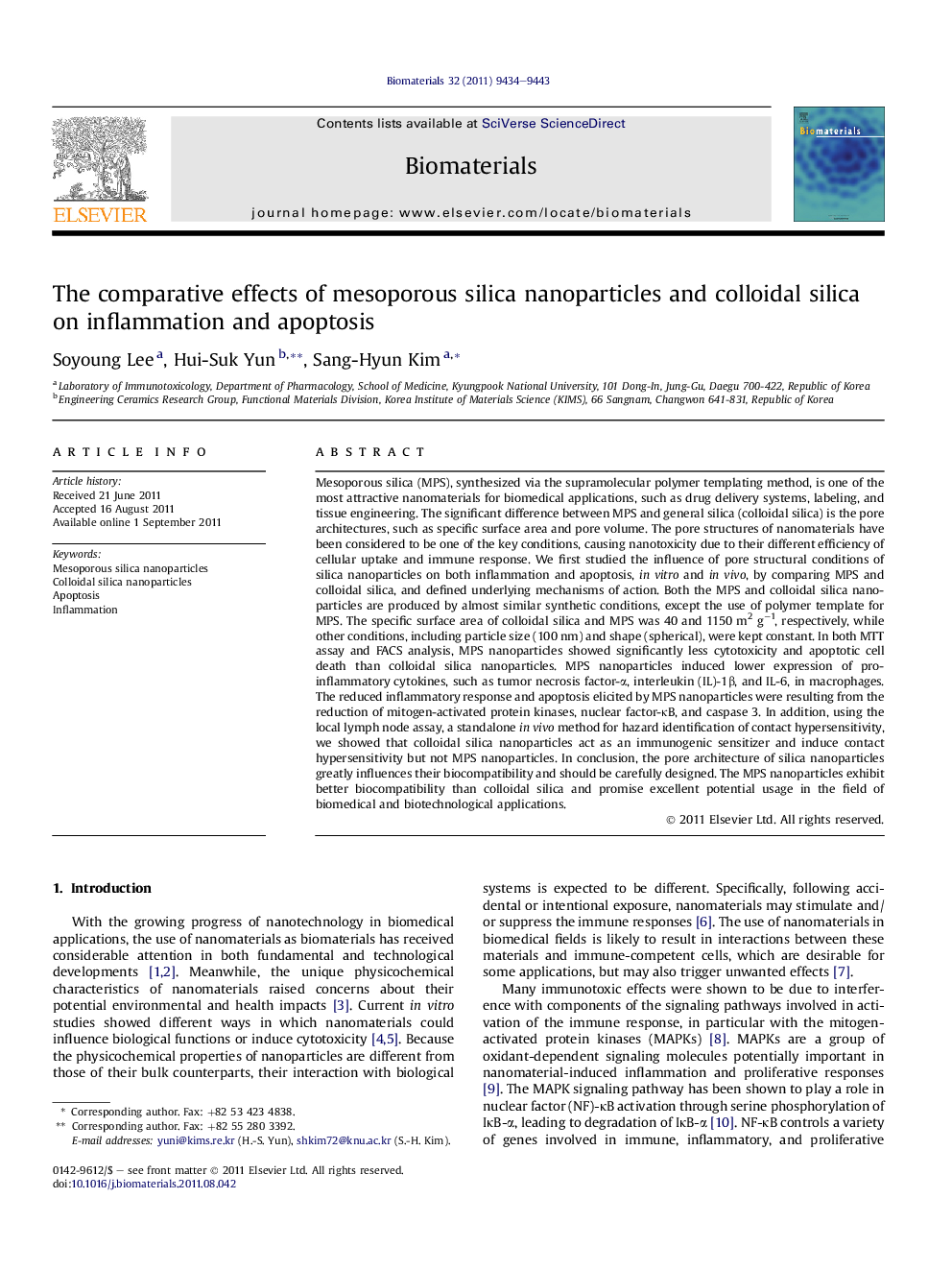| کد مقاله | کد نشریه | سال انتشار | مقاله انگلیسی | نسخه تمام متن |
|---|---|---|---|---|
| 7896 | 568 | 2011 | 10 صفحه PDF | دانلود رایگان |

Mesoporous silica (MPS), synthesized via the supramolecular polymer templating method, is one of the most attractive nanomaterials for biomedical applications, such as drug delivery systems, labeling, and tissue engineering. The significant difference between MPS and general silica (colloidal silica) is the pore architectures, such as specific surface area and pore volume. The pore structures of nanomaterials have been considered to be one of the key conditions, causing nanotoxicity due to their different efficiency of cellular uptake and immune response. We first studied the influence of pore structural conditions of silica nanoparticles on both inflammation and apoptosis, in vitro and in vivo, by comparing MPS and colloidal silica, and defined underlying mechanisms of action. Both the MPS and colloidal silica nanoparticles are produced by almost similar synthetic conditions, except the use of polymer template for MPS. The specific surface area of colloidal silica and MPS was 40 and 1150 m2 g−1, respectively, while other conditions, including particle size (100 nm) and shape (spherical), were kept constant. In both MTT assay and FACS analysis, MPS nanoparticles showed significantly less cytotoxicity and apoptotic cell death than colloidal silica nanoparticles. MPS nanoparticles induced lower expression of pro-inflammatory cytokines, such as tumor necrosis factor-α, interleukin (IL)-1β, and IL-6, in macrophages. The reduced inflammatory response and apoptosis elicited by MPS nanoparticles were resulting from the reduction of mitogen-activated protein kinases, nuclear factor-κB, and caspase 3. In addition, using the local lymph node assay, a standalone in vivo method for hazard identification of contact hypersensitivity, we showed that colloidal silica nanoparticles act as an immunogenic sensitizer and induce contact hypersensitivity but not MPS nanoparticles. In conclusion, the pore architecture of silica nanoparticles greatly influences their biocompatibility and should be carefully designed. The MPS nanoparticles exhibit better biocompatibility than colloidal silica and promise excellent potential usage in the field of biomedical and biotechnological applications.
Journal: Biomaterials - Volume 32, Issue 35, December 2011, Pages 9434–9443